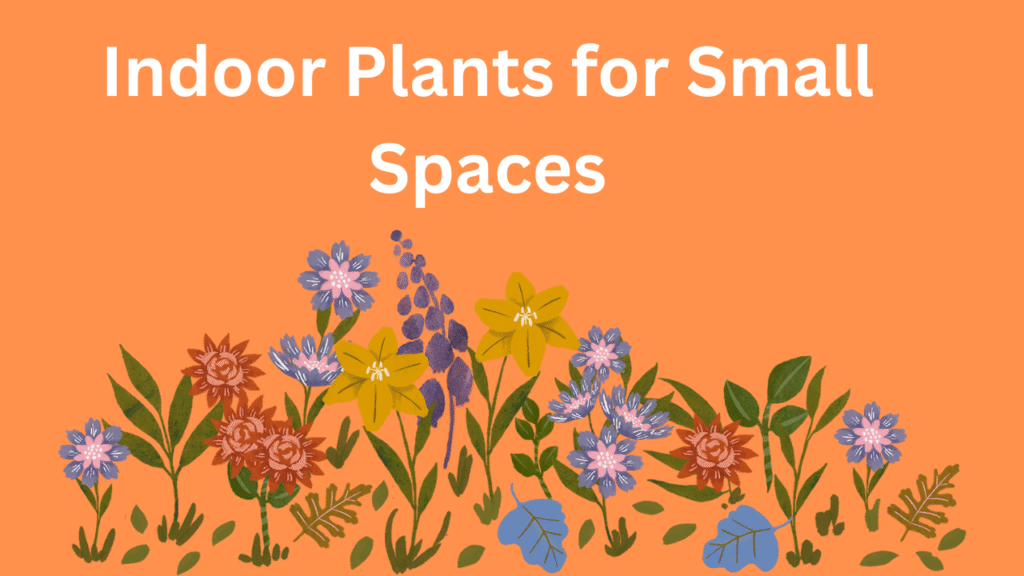Living in a small apartment or a home with limited space doesn’t mean you can’t enjoy the beauty of plants. In fact, indoor plants for small spaces are some of the most versatile, stylish, and functional greenery you can bring into your home. Whether you live in a cozy studio, a dorm room, or a compact city apartment, the right plants can maximize your space while offering benefits like cleaner air, stress relief, and a refreshing aesthetic.
Indoor plants aren’t just about decoration—they’re life enhancers. The good news? You don’t need a huge living room or a large garden to grow them. By choosing the right plants and displaying them creatively, you can bring vibrant greenery into even the smallest corners.
Ready to turn your small space into a lush, calming haven? Let’s dive in.
Why Indoor Plants Are Perfect for Small Spaces
Small homes often lack access to natural greenery, but indoor plants can change that. Here’s why they’re the perfect solution:
- Compact and adaptable – Many indoor plants thrive in containers and don’t require much room.
- Air purification – Even one plant can make your air healthier.
- Stylish décor – Plants double as design pieces, brightening up shelves, desks, and window sills.
- Mental health benefits – Greenery creates a calming environment, essential for small or busy spaces.
- Flexibility – Hanging baskets, vertical gardens, or wall-mounted planters make plants easy to fit anywhere.
Best Indoor Plants for Small Spaces
Here are some of the top choices for compact living areas:
1. Aloe Vera
- Why it’s great: A small succulent that thrives in bright light and requires minimal water.
- Best placement: Kitchen counters or windowsills.
- Benefit: Doubles as a natural remedy for burns and skin care.
2. Snake Plant (Sansevieria)
- Why it’s great: Upright leaves take up minimal floor space.
- Best placement: Bedroom corners or entryways.
- Benefit: Filters toxins and improves indoor air quality.
3. Pothos (Devil’s Ivy)
- Why it’s great: A vining plant that can trail or climb.
- Best placement: Hanging baskets or high shelves.
- Benefit: Low maintenance and highly adaptable to light conditions.
4. Spider Plant
- Why it’s great: Small, resilient, and pet-friendly.
- Best placement: Desktops, hanging planters, or side tables.
- Benefit: Produces “pups” for easy propagation.
5. ZZ Plant (Zamioculcas zamiifolia)
- Why it’s great: Compact, glossy, and nearly indestructible.
- Best placement: Offices, bedrooms, or shaded corners.
- Benefit: Requires minimal watering and survives in low light.
6. Lucky Bamboo
- Why it’s great: Slim, upright stalks don’t take much room.
- Best placement: Desks, side tables, or small countertops.
- Benefit: Symbolizes good fortune and positive energy.
7. Peace Lily
- Why it’s great: Compact plant with elegant white blooms.
- Best placement: Small living rooms or bedside tables.
- Benefit: Improves indoor air and creates a peaceful vibe.
8. Succulents & Cacti
- Why they’re great: Tiny, decorative, and extremely low-maintenance.
- Best placement: Windowsills, bathroom shelves, or work desks.
- Benefit: Come in countless shapes and sizes for easy styling.
Space-Saving Plant Display Ideas
When you live in a small space, how you display your plants matters. Here are creative ways to maximize greenery without crowding your home:
Hanging Planters
Suspend pothos or spider plants from the ceiling to save floor space.
Floating Shelves
Use wall-mounted shelves to display small succulents, cacti, or trailing plants.
Vertical Plant Walls
Create a living wall with compact planters for maximum greenery in minimal space.
Window Gardens
Line small pots on windowsills for herbs or succulents.
Multi-Tier Stands
Stack plants on tiered stands to create a mini indoor jungle without using much floor area.
Step-by-Step Guide to Caring for Indoor Plants in Small Spaces
Taking care of plants in a small home isn’t much different from larger spaces, but space limitations require some adjustments.
Step 1: Choose the Right Plants
- Pick plants that match your light conditions.
- Opt for compact or upright plants to save space.
Step 2: Use Proper Containers
- Choose small to medium-sized pots with drainage holes.
- Go vertical with wall-mounted planters when possible.
Step 3: Manage Light & Airflow
- Place low-light plants in corners and sun-lovers on windowsills.
- Rotate pots so plants grow evenly.
Step 4: Water Smartly
- In smaller spaces, humidity may be higher—water less often.
- Always check soil dryness before watering.
Step 5: Keep Plants Clean
- Dust leaves to keep them photosynthesizing efficiently.
- Trim dead leaves to maintain a neat look.
Benefits of Indoor Plants for Small Spaces
Even one or two plants can have a big impact in compact areas:
- Improved air quality – Spider plants, snake plants, and peace lilies filter pollutants.
- Stress relief – Greenery makes confined spaces feel more open and peaceful.
- Better sleep – Plants like snake plants and peace lilies release oxygen at night.
- Enhanced productivity – A ZZ plant or lucky bamboo on your desk can boost focus.
- Décor upgrade – Plants add life and personality without taking much space.
Common Mistakes to Avoid
Beginners often make these mistakes when growing plants in small spaces:
- Overcrowding – Too many plants can make a room feel cramped.
- Overwatering – A leading cause of plant death, especially in humid small rooms.
- Wrong placement – Some plants burn in direct sun; others die in dark corners.
- Ignoring repotting – Even small plants need fresh soil and space every year or two.
Styling Tips for Small-Space Plants
Here’s how to make the most of your greenery without cluttering your home:
- Mix plant sizes: Pair a tall snake plant with tiny succulents.
- Use mirrors: Place plants near mirrors to create an illusion of more greenery.
- Go vertical: Hanging baskets and wall-mounted planters save space.
- Minimalist approach: A few statement plants are better than clutter.
Indoor Plants for Small Spaces: Room-by-Room Ideas
Bedroom
- Snake Plant (cleans air at night)
- Peace Lily (calming and compact)
Living Room
- Rubber Plant (slender and bold)
- Pothos (great for hanging baskets)
Kitchen
- Aloe Vera (practical for burns)
- Herbs (small pots of basil, mint, or rosemary)
Office or Study
- Lucky Bamboo (brings positive vibes)
- ZZ Plant (thrives in low light, perfect for desks)
Bathroom
- Spider Plant (handles humidity well)
- Succulents (great for window sills)
Conclusion
Having a small space is no barrier to enjoying the beauty and benefits of indoor plants. From tiny succulents to air-purifying snake plants, the right greenery can brighten your home, purify your air, and boost your well-being without taking up much room.
With a little creativity—like using hanging planters, vertical gardens, or window displays—you can create a green sanctuary in any space.
🌿 Ready to get started? Explore more plant care tips, guides, and inspiration at Green Plant Zone and make your small space bloom with big greenery.
FAQs About Indoor Plants for Small Spaces
1. What are the best indoor plants for small apartments?
Snake plants, pothos, spider plants, and succulents are excellent for compact spaces.
2. Can indoor plants survive in low light?
Yes, ZZ plants, snake plants, and peace lilies thrive in low-light conditions.
3. Which plants are best for small bedrooms?
Snake plants, peace lilies, and aloe vera are perfect for bedrooms.
4. How do I style plants in a small space?
Use hanging planters, floating shelves, and vertical stands to save floor space.
5. Do small indoor plants need fertilizer?
Yes, but sparingly. Use indoor plant fertilizer every 4–6 weeks during growing seasons.

Hi, I’m the creator of Green Plant Zone, a space dedicated to plant lovers. I share tips on indoor and outdoor gardening, plant care guides, and eco-friendly living. My mission is to help you grow healthier, happier plants and bring more greenery into everyday life.
